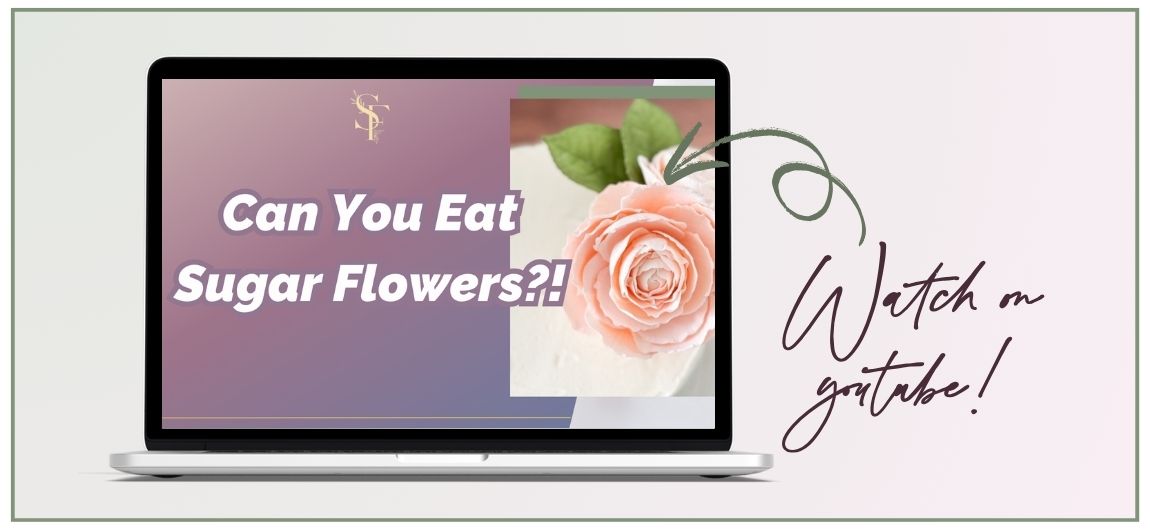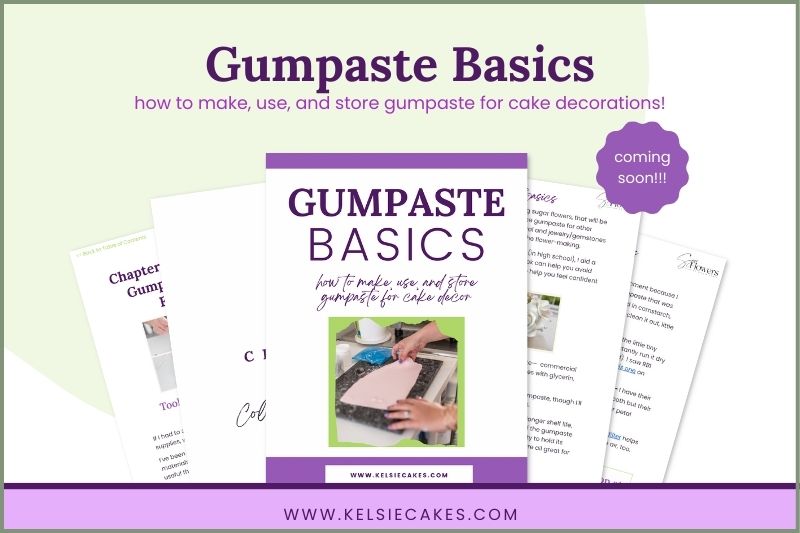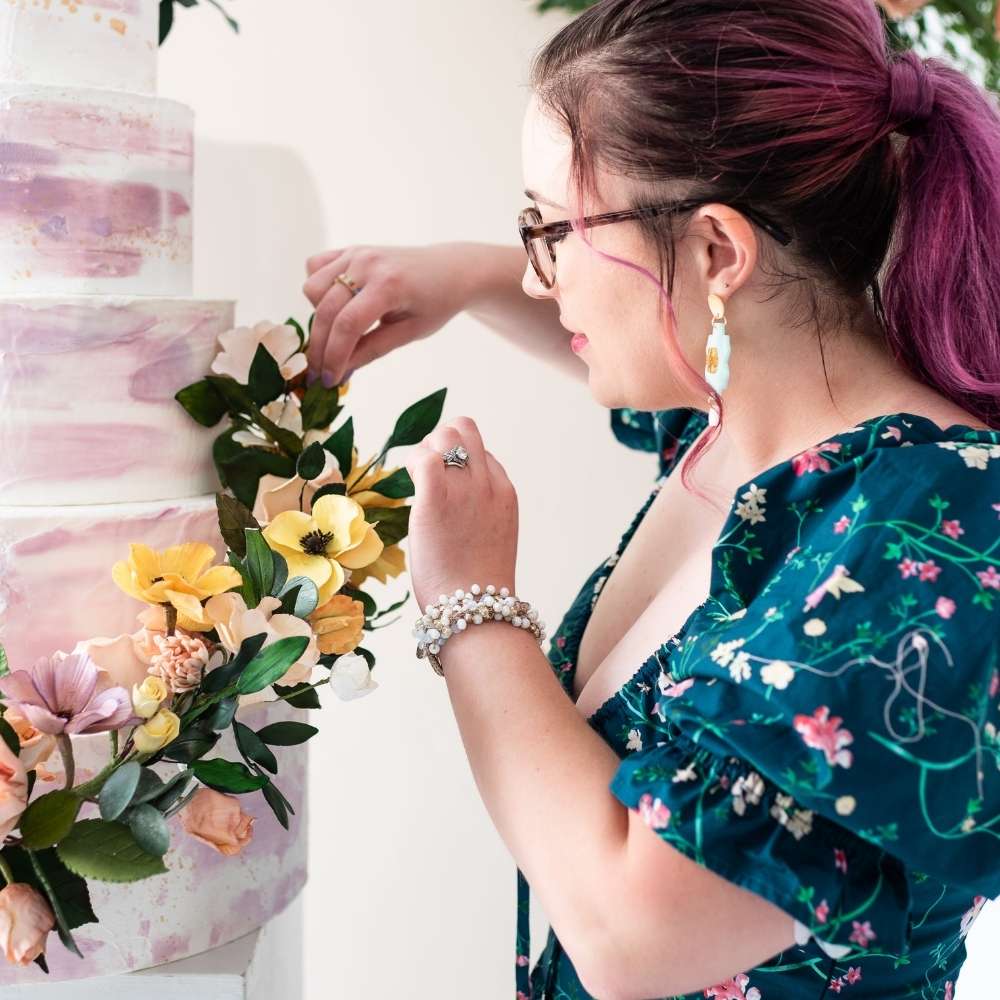reading time - 5 minutes
Table of Contents
If you’ve ever found yourself standing in the baking aisle staring at all the different sugar pastes— wondering what the heck the difference is between fondant, gumpaste, and modeling chocolate— you’re not alone. Each of these cake decorating pastes has its own strengths (and weaknesses), and which one you need to use really depends on what you’re making.

Heads up! This is an excerpt from my upcoming ebook, Gumpaste Basics, which you can preorder now! (Click here to preorder)
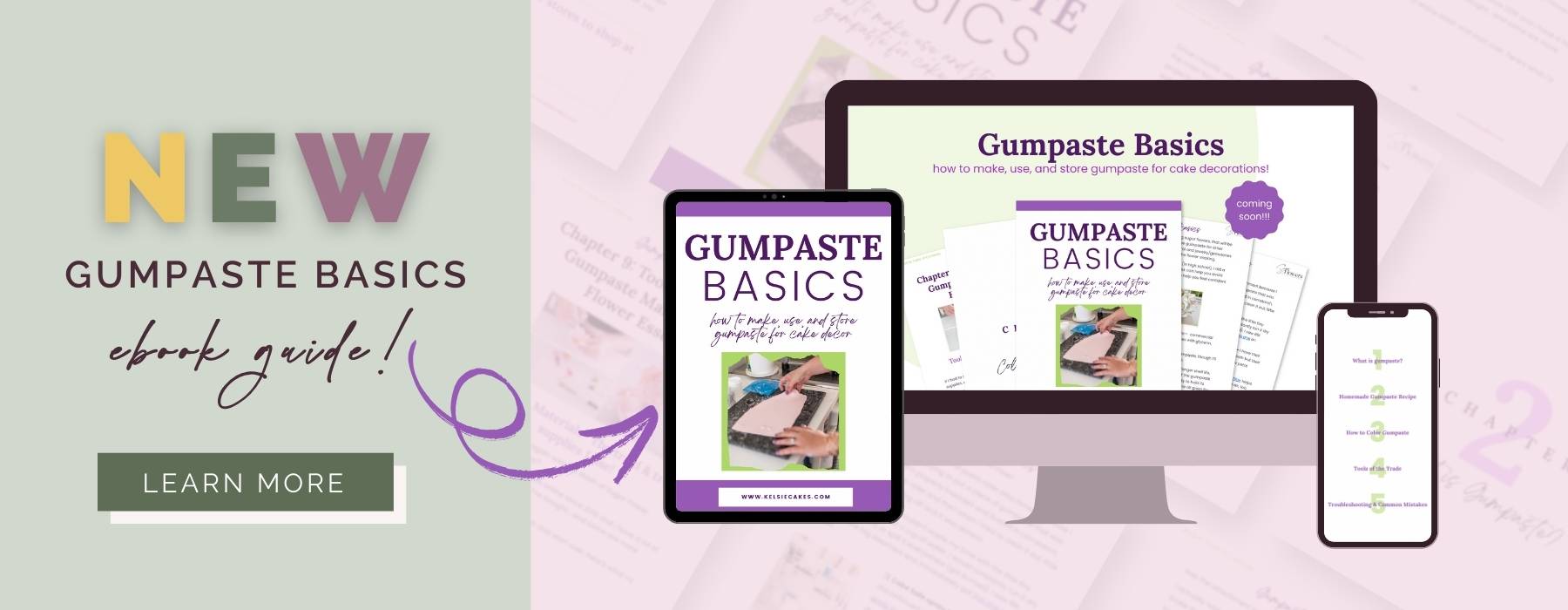
What is Gumpaste?
Gumpaste is a clay-like sugar-based paste that dries hard, and it’s usually used only for the decorations on the cake that aren’t meant to be eaten.
Unlike fondant, which stays soft and pliable on cakes, gumpaste is designed to dry quickly and hold its shape once it’s set. That’s why it’s the go-to material for sugar flowers— you can make your floral decorations well in advance before the cake is even in the oven, and your design will look flawless, even through a long wedding day and beyond.
Gumpaste also has a much longer shelf life because it dries rock hard.
Read this next: What is Gumpaste?
What is Fondant?
Fondant really is best used for covering cakes and for decor that doesn’t need the same level of precision as sugar flowers.
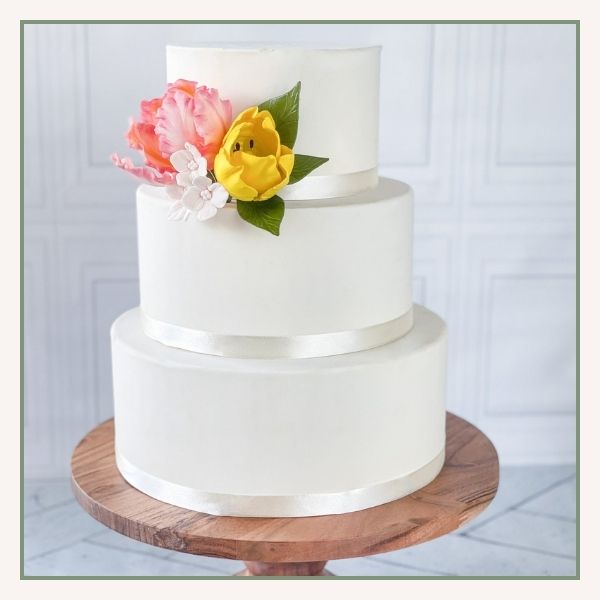
Fondant is soft and mostly stays that way— it’s meant to be eaten along with the cake. The fact that fondant tends to stay soft makes it hard to use for detailed, delicate designs that need to hold their shape for a long time.
Ideally, you want a super thin layer of fondant to cover your buttercream frosting, and the moisture from the cake and icing will keep the fondant soft and kind of dissolve into the buttercream. Then, when you serve the cake, the fondant isn’t a thick chewy layer that all the guests just peel off!
What is Modeling Chocolate?
Modeling chocolate is made with chocolate (or candy coating) mixed with corn syrup to turn it into an edible clay.
It’s not always great in humidity and definitely doesn’t hold up in the heat, but modeling chocolate can be used to create some pretty amazing sculptures, similar to air-dry clay. Because of the cocoa butter in chocolate, you can blend it really well which helps hide seams and imperfections!
Modeling chocolate is also (in my opinion) the best-tasting option.
Can You Use Them Interchangeably when Cake Decorating?
A quick shortcut if you need gumpaste but only have fondant on hand is to add CMC power to your fondant. This will help the fondant dry out more and harden up faster.
The fondant won’t ever be as stable as ’real’ gumpaste and I find that my sugar flowers are more likely to break or crumble if they’re made with fondant. When I’m shipping my sugar flowers, I don’t ever use this fondant-based recipe.
However, using fondant + CMC powder/tylose powder is a good way to make your own vegan/egg-free gumpaste, though! This is definitely a consideration if you’re dealing with egg allergies.
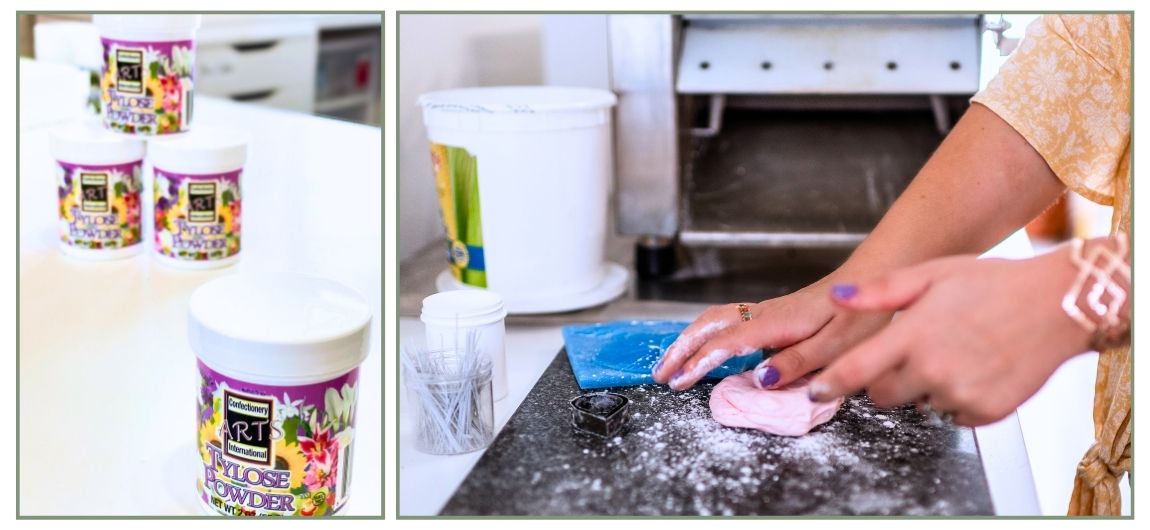
What Should You Use for Sugar Flowers?
Gumpaste is, hands down, the best paste to use for making sugar flowers.
It’s strong, it dries fast, it can hold crazy amounts of detail, and it can survive humidity, shipping, and everything a wedding cake can throw at it.
(Though I hope your wedding cakes aren’t throwing things!)
And like I said, you definitely can use fondant with tylose powder as a quick fix, but it won’t be as sturdy or long-lasting. And modeling chocolate is the perfect choice for sculptures but not so much for super thin petals.
But if you’re reading this blog post, you might also be thinking that gumpaste can be a little intimidating when you’re first starting (or even if you’ve been decorating cakes for years and just never had someone explain it clearly).
(I know this because that’s where I was when I first started!)
Wanna learn more + dig deeper?
Like I said at the beginning, this is pulled from my ebook, Gumpaste Basics, where I share literally everything I know about using gumpaste! From comparisons like “gumpaste vs. fondant” to “Satin Ice vs. Sarachino” to what kind of food coloring works best, I’ve spilled the beans on tips, tricks, and hacks on how to use gumpaste as the foundation for making gorgeous sugar flowers.
Basically, Gumpaste Basics is my brain in book form.
Some of the stuff I’ve included inside it…
- What gumpaste is (and why it’s so different from fondant)
- My favorite commercial brands (and which ones to avoid)
- How to make your own gumpaste from scratch (with my go-to recipe)
- How to store, color, and fix gumpaste (without losing your mind)
- What to do when humidity tries to ruin your flowers (and your hair. jk, no hair styling tips from me!)
Plus, stories of what not to do. Like the time I may or may not have almost set my microwave on fire.
If you’re ready to stop fighting with your sugar paste and start feeling confident making flowers that can hold up to the real world, this guide was written for you.
I hope you’ll check it out and learn something new!
